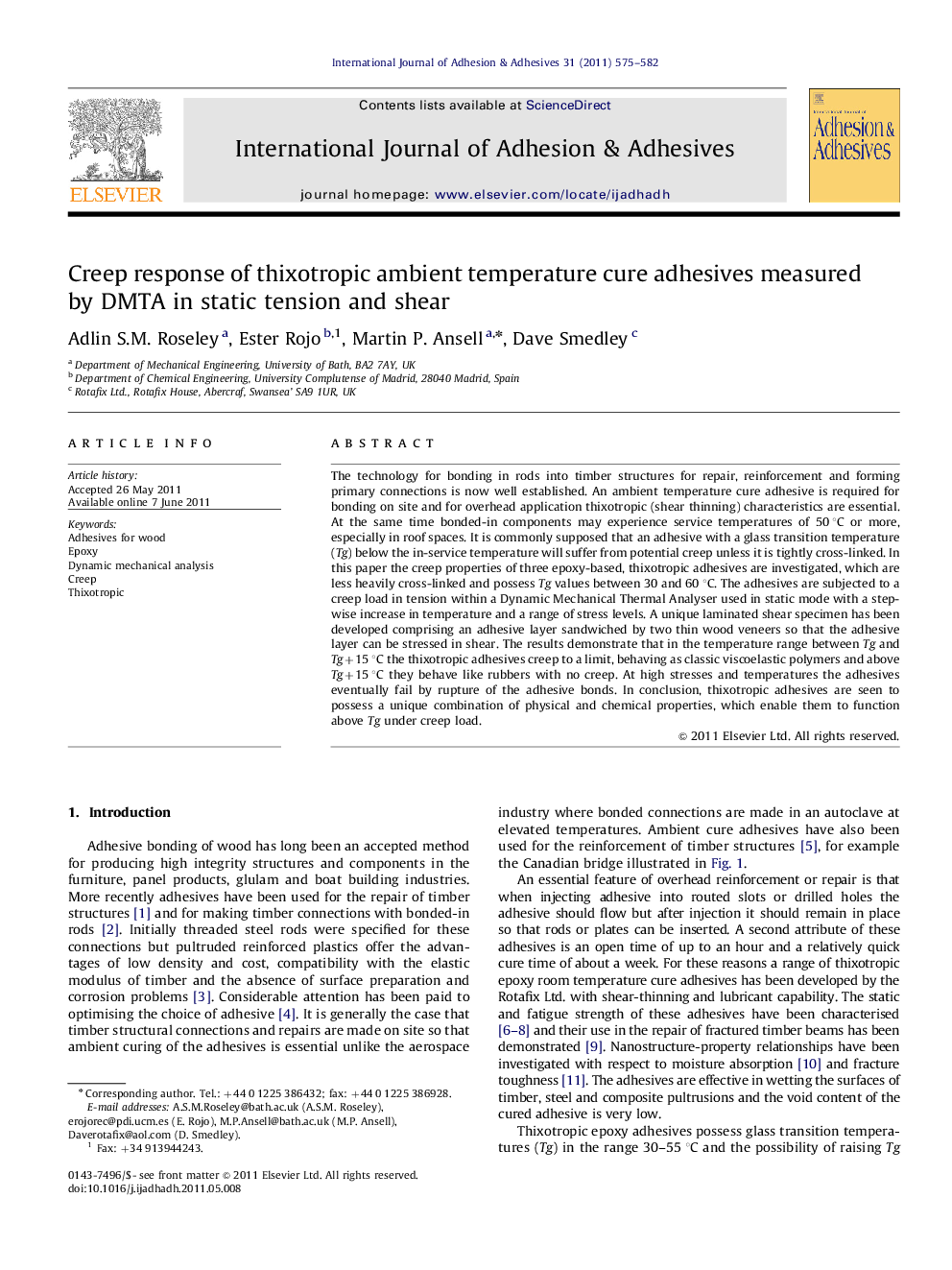| Article ID | Journal | Published Year | Pages | File Type |
|---|---|---|---|---|
| 777137 | International Journal of Adhesion and Adhesives | 2011 | 8 Pages |
The technology for bonding in rods into timber structures for repair, reinforcement and forming primary connections is now well established. An ambient temperature cure adhesive is required for bonding on site and for overhead application thixotropic (shear thinning) characteristics are essential. At the same time bonded-in components may experience service temperatures of 50 °C or more, especially in roof spaces. It is commonly supposed that an adhesive with a glass transition temperature (Tg) below the in-service temperature will suffer from potential creep unless it is tightly cross-linked. In this paper the creep properties of three epoxy-based, thixotropic adhesives are investigated, which are less heavily cross-linked and possess Tg values between 30 and 60 °C. The adhesives are subjected to a creep load in tension within a Dynamic Mechanical Thermal Analyser used in static mode with a step-wise increase in temperature and a range of stress levels. A unique laminated shear specimen has been developed comprising an adhesive layer sandwiched by two thin wood veneers so that the adhesive layer can be stressed in shear. The results demonstrate that in the temperature range between Tg and Tg+15 °C the thixotropic adhesives creep to a limit, behaving as classic viscoelastic polymers and above Tg+15 °C they behave like rubbers with no creep. At high stresses and temperatures the adhesives eventually fail by rupture of the adhesive bonds. In conclusion, thixotropic adhesives are seen to possess a unique combination of physical and chemical properties, which enable them to function above Tg under creep load.
